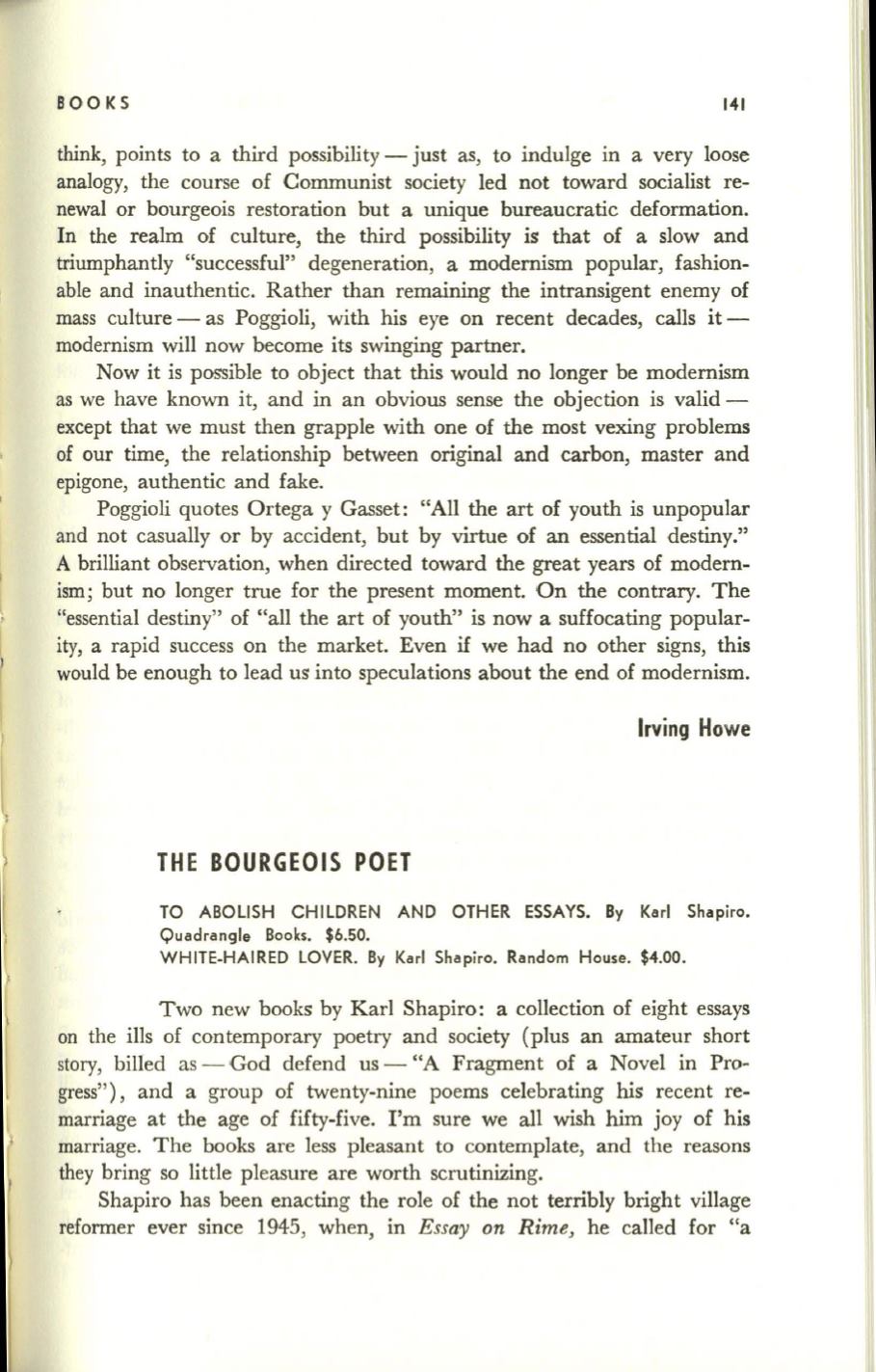
BOOKS
141
think, points to a third possibility - just as, to indulge in a very loose
analogy, the course of Communist society led not toward socialist re–
newal or bourgeois restoration but a unique bureaucratic deformation.
In the realm of culture, the third possibility is that of a slow and
triumphantly "successful" degeneration, a modernism popular, fashion–
able and inauthentic. Rather than remaining the intransigent enemy of
mass culture - as Poggioli, with his eye on recent decades, calls it–
modernism will now become its swinging partner.
Now it is possible to object that this would no longer be modernism
as we have known it, and in an obvious sense the objection is valid–
except that we must then grapple with one of the most vexing problems
of our time, the relationship between original and carbon, master and
epigone, authentic and fake.
Poggioli quotes Ortega y Gasset: "All the art of youth is unpopular
and not casually or by accident, but by virtue of an essential destiny."
A
brilliant observation, when directed toward the great years of modern–
ism; but no longer true for the present moment. On the contrary. The
"essential destiny" of "all the art of youth" is now a suffocating popular–
ity, a rapid success on the market. Even if we had no other signs, this
would be enough to lead us into speculations about the end of modernism.
Irving Howe
THE BOURGEOIS POET
TO ABOLISH CHILDREN AND OTHER ESSAYS. By Karl Shapiro.
Quadrangle Books. $6.50.
WHITE.HAIRED LOVER. By Karl Shapiro. Random House. $4.00.
Two new books by Karl Shapiro: a collection of eight essays
on the ills of contemporary poetry and society (plus an amateur short
story, billed as - God defend us - "A Fragment of a Novel in Pro–
gress" ), and a group of twenty-nine poems celebrating his recent re–
marriage at the age of fifty-five. I'm sure we all wish him joy of his
marriage. The books are less pleasant to contemplate, and the reasons
they bring so little pleasure are worth scrutinizing.
Shapiro has been enacting the role of the not terribly bright village
reformer ever since 1945, when, in
Essay on Rime,
he called for "a


